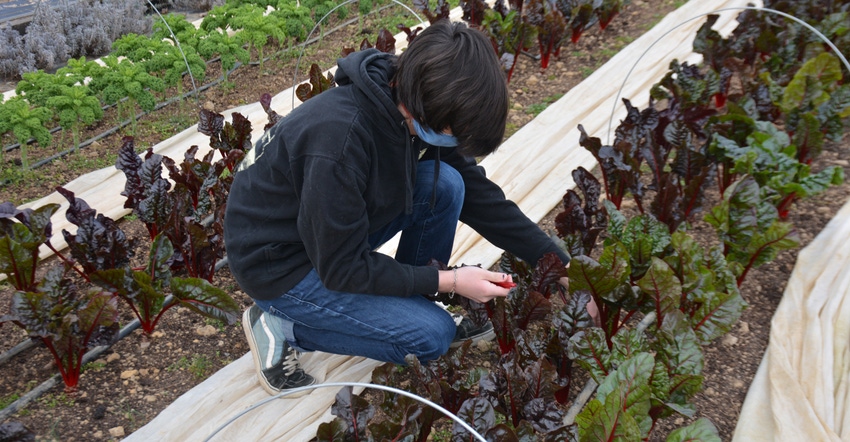July 16, 2021

Despite vastly outnumbering large farms, small farms produce only a tiny fraction of Pennsylvania's total agricultural output. But these smaller farms support billions of dollars’ worth of economic activity while helping to preserve farmland and adding to the diversity of the state's agriculture, according to researchers at Penn State.
The researchers summarized their findings in two reports: "Not Inconsequential: The Economic Effect of Small Farms in Pennsylvania, 2017" and "Understanding the Quiet Majority: Small Farms in Pennsylvania, 2017."
The reports are part of a series, "Understanding Pennsylvania Agriculture: 2017 Update," that explores various aspects of USDA's 2017 Census of Agriculture. The census is compiled every five years, and the 2017 results were released in 2019.
"Small farms often are overlooked or even dismissed when people talk about agriculture in Pennsylvania," says Timothy Kelsey, professor of agricultural economics and co-director of the Center for Economic and Community Development. "Although they contribute relatively little to total agricultural production in the state, small farms far outnumber larger farms. Narrowly focusing on the value of their agricultural sales misses the important roles they play in the commonwealth."
USDA defines small farms as those with less than $250,000 in annual agricultural product sales, a category that applied to 88% of Pennsylvania farms in 2017. Those farms’ share of total agricultural product sales in 2017 was about 19%.
However, 27,000 farms in the state, or about 51% of all farms, had sales of less than $10,000, collectively accounting for only 0.8% of total agricultural sales that year. In contrast, the 3,087 operations with more than $500,000 in annual sales represented only 5.8% of Pennsylvania farms, but claimed almost two-thirds of all agricultural sales.
Small but important
Kelsey points out that most small farms in Pennsylvania lose money, largely because many are operated for lifestyle or recreational purposes, or to supplement a family's food supply and not to provide the bulk of household income.
He explains that despite their relatively low output, small farms still made important economic contributions through their purchases, spending about $1.5 billion on production costs and generating about $2.2 billion in direct, indirect and induced economic activity in 2017.
“Small farms purchase a significant amount of supplies and services from the local farm-related businesses that larger farms also rely on, and thus help those businesses remain in operation," Kelsey says. "Many small farms also purchase agricultural products, such as hay or other feeds, from nearby larger farms, which helps to support those larger farms financially."
But the benefits of small farms go beyond economic considerations, says report co-author Emily Ciganik, undergraduate research associate in the Center for Economic and Community Development.
"Small farms are important stewards of farmland in Pennsylvania, keeping land open and providing environmental benefits," she says. "In addition, small-farm owners can be important allies with larger farms in advocating for local farm-friendly policies, providing a stronger voice for the agricultural community."
Besides differences in sales volume, small and large farms differ in the types of agricultural products they produce, the reports indicate.
"Small farms are much more likely to have their primary venture revolve around the production of hay, beef cattle, and aquaculture and other animals, which may include bees, horses, rabbits and other species," says Jessica Shi, undergraduate research associate and co-author. "On the other hand, a much greater percentage of larger farms are involved in dairy and poultry production as their primary focus."
Older than average
The reports also highlight demographic characteristics that distinguish operators of small and large farms, notes co-author Alyssa Gurklis with the Center for Economic and Community Development program and project coordinator, who says small-farm operators tended to skew older.
"The average age of operators of farms selling less than $1,000 of agricultural products a year was 59.1 in 2017, compared to an average age of only 49.6 years among operators of farms selling more than $1 million," Gurklis says. "About a third of operators of farms with sales between $5,000 and $9,999 were 65 years or older, while only 12.5% of operators of farms selling between $250,000 and $499,999 were 65 years or older."
She adds that operators of small farms also were more likely to have off-farm employment and spend more days, on average, working off the farm than those overseeing larger operations.
These and other reports in the "Understanding Pennsylvania Agriculture, 2017 Update" series can be found on the Center for Economic and Community Development website. Penn State Extension and USDA’s National Institute of Food and Agriculture supported this work.
Source: Penn State University, which is solely responsible for the information provided and is wholly owned by the source. Informa Business Media and all its subsidiaries are not responsible for any of the content contained in this information asset.
You May Also Like




